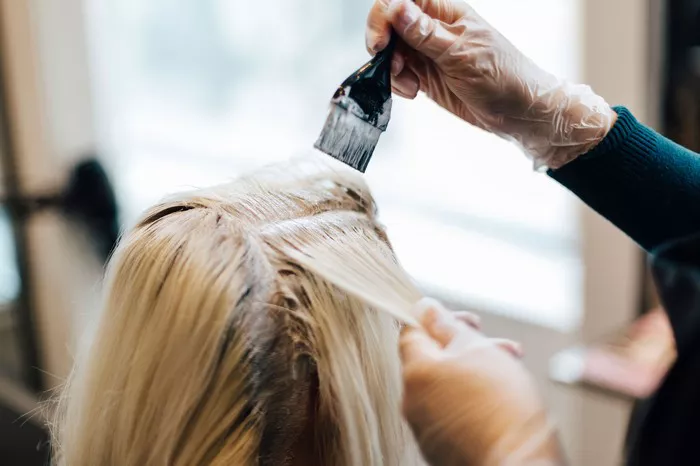Cream bleach is a popular product used to lighten hair color. Whether you want to go blonde, prepare your hair for vibrant colors, or just add highlights, cream bleach is a common choice. This article explains what cream bleach is, how it works, its pros and cons, and how to use it safely. By the end, you’ll understand why it’s a favorite among stylists and home users alike.
What Is Cream Bleach?
Cream bleach is a hair-lightening product with a thick, creamy texture. Unlike powder or oil-based bleach, it’s easy to mix and apply. Its main job is to break down the natural pigment (melanin) in your hair, making it lighter.
Key Ingredients:
Lightening Agents: Usually contains ammonia or a substitute (like MEA) to open the hair cuticle and start the lightening process.
Developer (Peroxide): Mixed with the cream, the developer strength (10-volt to 40-volt) decides how light the hair gets.
Conditioning Additives: Oils or proteins to reduce damage and keep hair soft.
Thickeners: Give the cream its texture, preventing drips during application.
How It Differs From Other Bleaches
Powder Bleach: Stronger and faster but harsher. Often used for drastic lightening.
Oil-Based Bleach: Gentler but less control during application.
Cream bleach balances gentleness and effectiveness, making it ideal for beginners or sensitive scalps.
How Does Cream Bleach Work?
Hair lightening is a chemical process. Here’s a simple breakdown:
Opening the Cuticle: Ammonia lifts the hair’s outer layer (cuticle), letting bleach reach the melanin inside.
Breaking Down Melanin: The developer (hydrogen peroxide) oxidizes melanin, turning dark pigment into colorless particles.
Lightening Process: The longer the bleach stays, the lighter the hair becomes.
Developer Volumes Explained
10–20 Volume: Mild lightening (1–2 shades) or sensitive scalps.
30 Volume: Medium lightening (2–3 shades), common for most uses.
40 Volume: Strong lightening (4+ shades), risky for home use.
Why Cream Bleach Is Slower
The creamy formula works slower than powder bleach, reducing damage but requiring more time (20–50 minutes).
Advantages of Cream Bleach
Gentler on Hair
Contains conditioners that protect hair while lightening.
Easy to Apply
Thick texture sticks to hair, avoiding drips. Great for highlights or roots.
Less Irritation
Lower ammonia levels reduce scalp irritation.
Consistent Results
Even application means fewer patchy spots.
Versatile
Works on all hair types, especially thick or coarse hair.
Disadvantages of Cream Bleach
Slower Processing
Not ideal for quick touch-ups.
Less Intense Lightening
May struggle with very dark hair or stubborn pigments.
Risk of Overlap Damage
Reapplying on previously bleached hair can cause breakage.
Step-by-Step Application Guide
Prepare Your Hair
- Don’t wash hair 24–48 hours before; natural oils protect the scalp.
- Do a strand test to check processing time and results.
Mix the Product
- Follow instructions to mix cream bleach and developer (usually 1:2 ratio).
Section Hair
- Divide hair into 4–6 sections with clips for even coverage.
Apply the Bleach
- Use a brush to apply from mid-lengths to ends, then roots (they process faster).
Monitor Processing
- Check every 5–10 minutes. Hair should turn pale yellow (for platinum) or golden (for warm tones).
Rinse and Condition
- Rinse with cool water and use a deep conditioner to restore moisture.
Safety Tips
- Patch Test: Check for allergies 48 hours before.
- Avoid Overlapping: Don’t apply bleach to already lightened hair.
- Use Gloves and Ventilation: Protect skin and lungs.
- Follow Timing: Don’t exceed recommended processing time.
Aftercare for Bleached Hair
- Use Purple Shampoo: Neutralizes brassy tones.
- Deep Condition Weekly: Replenish moisture with masks.
- Avoid Heat Tools: Let hair recover; use heat protectant if needed.
- Trim Regularly: Prevent split ends from damage.
Cream Bleach vs. Other Types
- Powder Bleach: Better for professionals needing speed and maximum lift.
- Oil Bleach: Milder but messy; suits subtle highlights.
Choose Cream Bleach If: You want balance between gentleness and effectiveness.
Common Mistakes to Avoid
- Skipping the strand test.
- Using high-volume developer unnecessarily.
- Applying to dirty or product-heavy hair.
- Rinsing with hot water (opens cuticles, causing dryness).
Conclusion
Cream bleach is a versatile, user-friendly option for lightening hair. While it’s gentler than powder bleach, proper application and aftercare are key to avoiding damage. Whether you’re a DIY enthusiast or a salon-goer, understanding how cream bleach works helps you achieve beautiful, healthy results. Always prioritize hair health, and when in doubt, consult a professional stylist.
Final Tips: Start with a lower developer volume, invest in quality products, and never rush the process. Happy lightening!
Related topics:
What Is the Safest Hair Bleach?
What Type of Bleach Should I Use for My Hair?
What Should I Use to Bleach My Hair?


